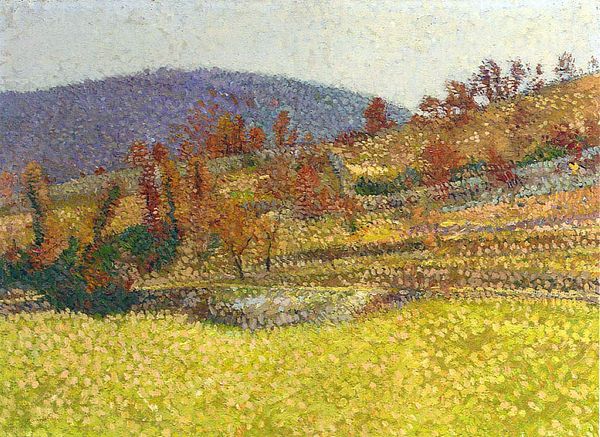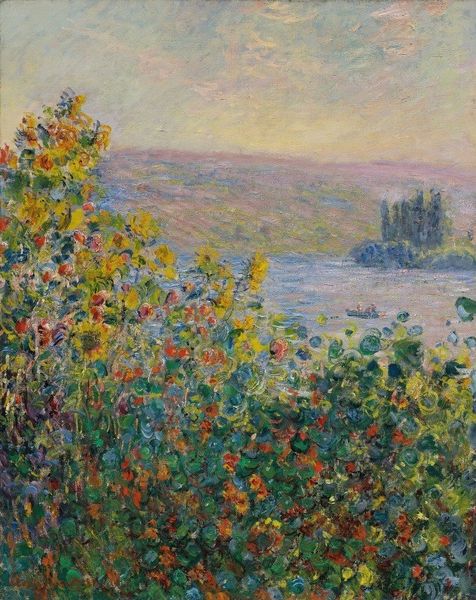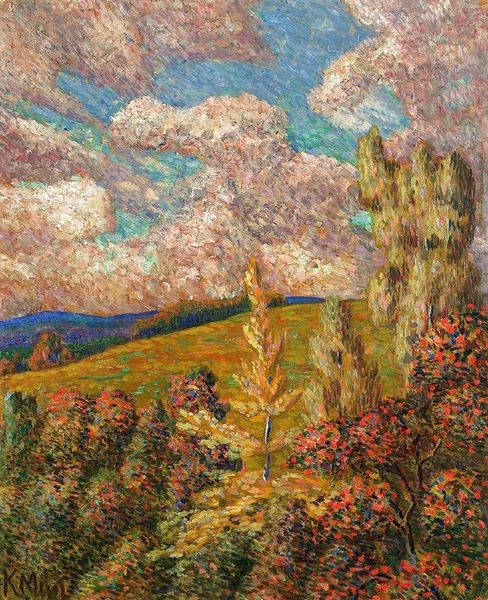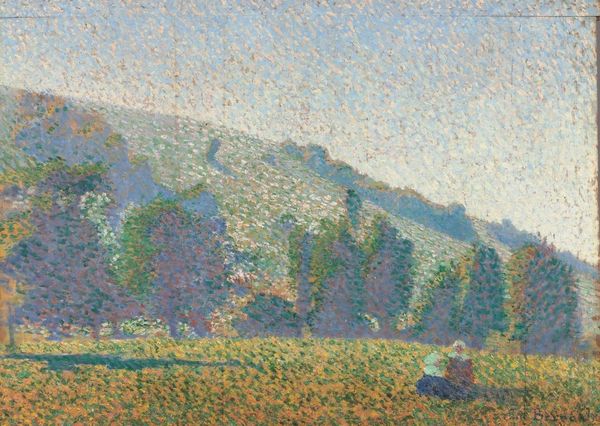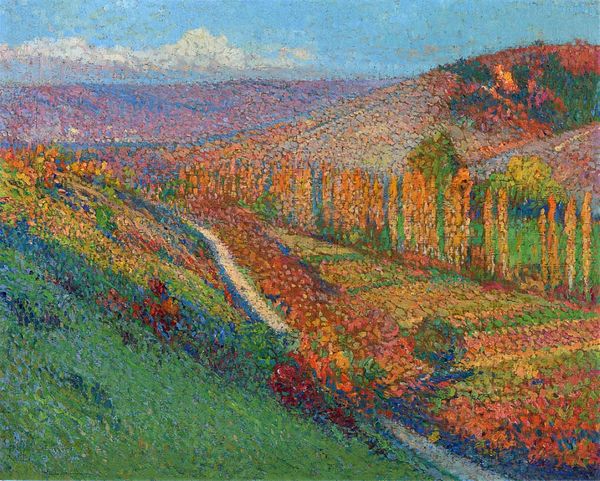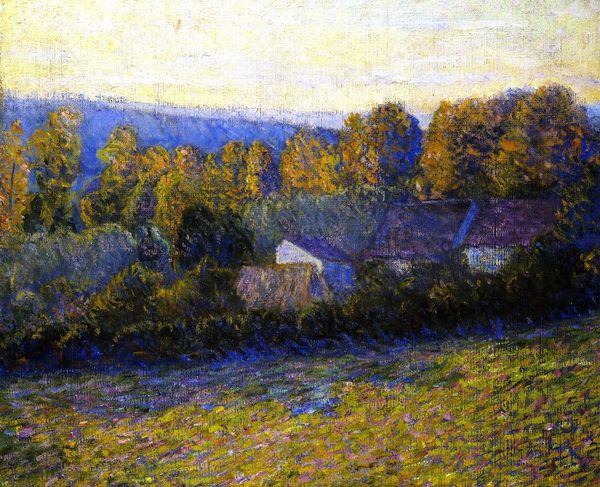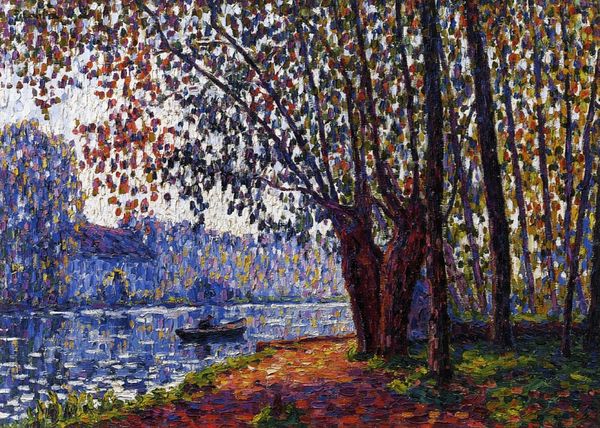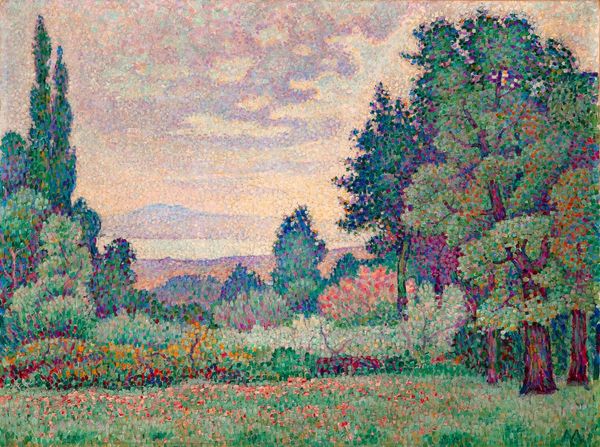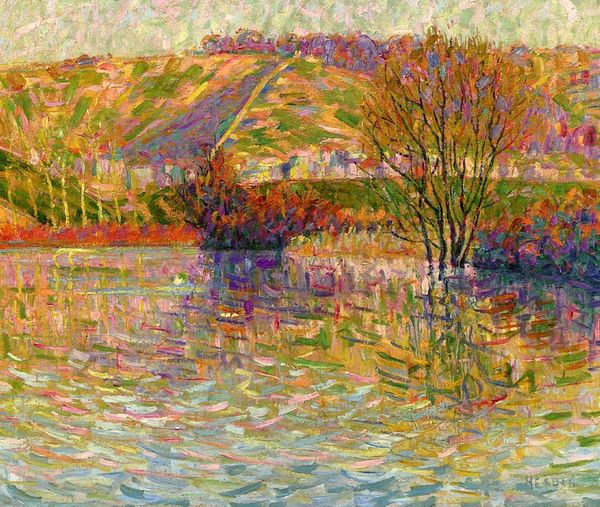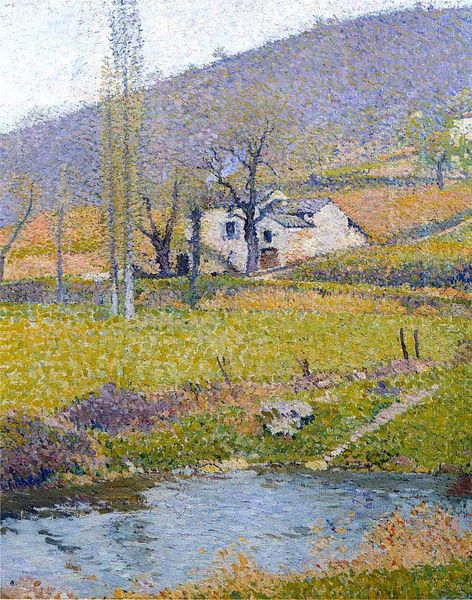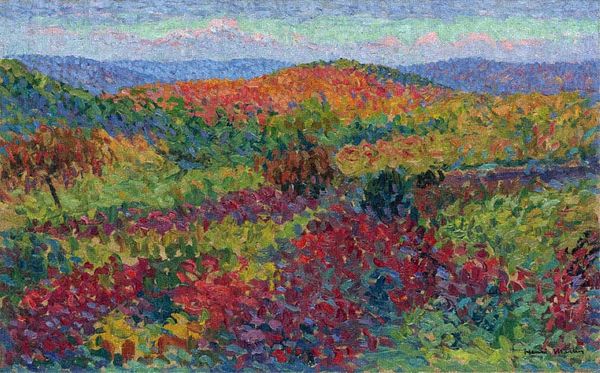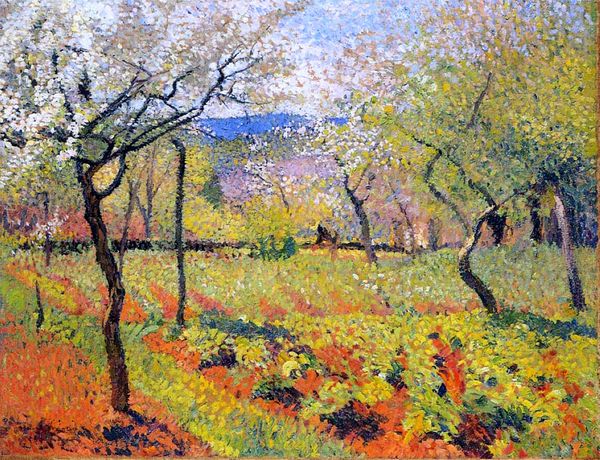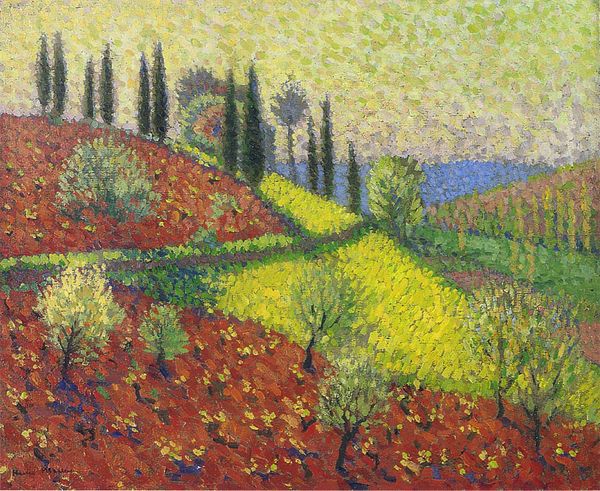
divisionism, painting, oil-paint
#
divisionism
#
painting
#
impressionism
#
impressionist painting style
#
oil-paint
#
neo-impressionism
#
landscape
#
impressionist landscape
#
oil painting
#
post-impressionism
Copyright: Public domain
Editor: Here we have Maximilien Luce's "The Seine at Herblay" from 1890. It’s an oil painting, and what strikes me immediately is the incredible texture achieved through the use of what I believe is the divisionist technique, making for an overall shimmering effect. What compositional elements stand out to you? Curator: The insistent application of dots of pure color compels the eye to blend hues optically. Note how Luce’s composition emphasizes the horizontal—the river flowing toward the horizon line, the cultivated field stepping upward. The repetition of forms also establishes a strong rhythm. Do you observe a structural underpinning guiding this optical dance? Editor: I see what you mean; the repeated use of dabs of color seems to mimic the flow of the river in the distance. Is there something to be said about the way he guides your eye through the composition? Curator: Precisely! The varied sizes of these chromatic units suggest a perspectival recession, a carefully orchestrated depth of field. Furthermore, observe the interplay between warm, earthly colors in the foreground and the cooler tones of the water and distant landscape. Is the significance of that balance clear to you? Editor: The foreground feels rich and almost tactile, which contrasts the soft and muted atmosphere in the distance. Is that sense of a division also intended? Curator: An astute observation! Through chromatic contrast and a methodical structuring of the surface, Luce has given the canvas its formal power. One could interpret it as mirroring the harmony of human industry in agreement with nature itself, where the dots act as signifiers which point to the material and ideological context which gave birth to such imagery. What final observations do you now carry? Editor: Thinking about the points as structural elements and how they form the world creates an entire relationship between the painting's materiality and the subject matter. Curator: Indeed. This piece, reduced to its formal elements, rewards a slower, sustained look.
Comments
No comments
Be the first to comment and join the conversation on the ultimate creative platform.
